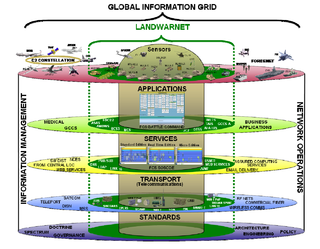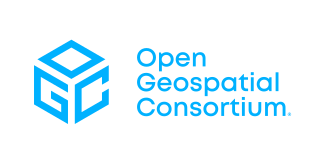Related Research Articles
A digital image is an image composed of picture elements, also known as pixels, each with finite, discrete quantities of numeric representation for its intensity or gray level that is an output from its two-dimensional functions fed as input by its spatial coordinates denoted with x, y on the x-axis and y-axis, respectively. Depending on whether the image resolution is fixed, it may be of vector or raster type. By itself, the term "digital image" usually refers to raster images or bitmapped images.

Wireless sensor network (WSN) refers to a group of spatially dispersed and dedicated sensors for monitoring and recording the physical conditions of the environment and organizing the collected data at a central location. WSNs measure environmental conditions like temperature, sound, pollution levels, humidity, wind, and so on.

A MIDI controller is any hardware or software that generates and transmits Musical Instrument Digital Interface (MIDI) data to MIDI-enabled devices, typically to trigger sounds and control parameters of an electronic music performance.
The concept of the "sensor web" is a type of sensor network that is especially well suited for environmental monitoring. The phrase the "sensor web" is also associated with a sensing system which heavily utilizes the World Wide Web. OGC's Sensor Web Enablement (SWE) framework defines a suite of web service interfaces and communication protocols abstracting from the heterogeneity of sensor (network) communication.
SWE may refer to:
SensorML is an approved Open Geospatial Consortium standard. SensorML provides standard models and an XML encoding for describing sensors and measurement processes. SensorML can be used to describe a wide range of sensors, including both dynamic and stationary platforms and both in-situ and remote sensors.
oBIX is a standard for RESTful Web Services-based interfaces to building control systems. oBIX is about reading and writing data over a network of devices using XML and URIs, within a framework specifically designed for building automation.

The FCS Network - Brigade Combat Team (BCT) Network consists of five layers that combine to provide seamless delivery of data to forward-deployed Army units.

The Internet of things (IoT) is a system of interrelated computing devices, mechanical and digital machines provided with unique identifiers (UIDs) and the ability to transfer data over a network without requiring human-to-human or human-to-computer interaction.
The IBM RFID Information Center (RFIDIC) software solution is based on EPCglobal's Electronic Product Code Information Services (EPCIS) standard specification. RFID Information Center enables tracking of uniquely identifiable (serialized) product throughout the supply chain. Despite the name, the RFID Information Center is sensor agnostic, meaning it recognizes product serialized with RFID, barcode and/or 2D barcode. This IBM WebSphere middleware offering is a software product that falls within IBM's broader IBM Information Management Software line.
The IPSO Alliance was an organization promoting the Internet Protocol (IP) for what it calls "smart object" communications. The IPSO in IPSO Alliance is short for Internet Protocol for Smart Objects. The IPSO Alliance was a non-profit organization founded in 2008 with members from technology, communications and energy companies. The IPSO Alliance advocated for IP networked devices in energy, consumer, healthcare and industrial applications. On March 27, 2018 the IPSO Alliance merged with the Open Mobile Alliance (OMA) to form OMA SpecWorks.
Observations and Measurements (O&M) is an international standard which defines a conceptual schema encoding for observations, and for features involved in sampling when making observations. While the O&M standard was developed in the context of geographic information systems, the model is derived from generic patterns proposed by Fowler and Odell, and is not limited to spatial information. O&M is one of the core standards in the OGC Sensor Web Enablement suite, providing the response model for Sensor Observation Service (SOS).
The Web of Things (WoT) is software architectural styles and programming patterns that allow real-world objects to be part of the World Wide Web. Similarly to what the Web is to the Internet, the Web of Things provides an Application Layer that simplifies the creation of Internet of Things (IoT) applications composed of multiple devices across different platforms and application domains. Differently from IoT which focuses on the Network Layer, WoT assumes that the connectivity between the devices is achieved and focuses on how to build applications.
The Semantic Sensor Web (SSW) is a marriage of sensor and Semantic Web technologies. The encoding of sensor descriptions and sensor observation data with Semantic Web languages enables more expressive representation, advanced access, and formal analysis of sensor resources. The SSW annotates sensor data with spatial, temporal, and thematic semantic metadata. This technique builds on current standardization efforts within the Open Geospatial Consortium's Sensor Web Enablement (SWE) and extends them with Semantic Web technologies to provide enhanced descriptions and access to sensor data.

The LG enV Touch also known as the Voyager 2, or VX11000 is an internet-enabled, multimedia device created by LG Electronics for use with Verizon Wireless. The phone was released on June 5, 2009 as a successor to the LG Voyager. The phone's external screen is touch enabled with a virtual keyboard and buttons. The internal screen features a QWERTY keyboard and both screens have a WVGA resolution. The phone's functions include a 3.2-megapixel camera with flash, a portable media player, text messaging, e-mail support, a web browser, a built-in accelerometer, and Verizon's GPS navigation software, VZ Navigator. It is a dual-band CDMA phone using EVDO for data communications.

The Open Geospatial Consortium (OGC), an international voluntary consensus standards organization, originated in 1994. In the OGC, more than 500 commercial, governmental, nonprofit and research organizations worldwide collaborate in a consensus process encouraging development and implementation of open standards for geospatial content and services, sensor web and Internet of Things, GIS data processing and data sharing.
Middleware is computer software that provides services to software applications beyond those available from the operating system. It can be described as "software glue".
The Sensor Observation Service (SOS) is a web service to query real-time sensor data and sensor data time series and is part of the Sensor Web. The offered sensor data comprises descriptions of sensors themselves, which are encoded in the Sensor Model Language (SensorML), and the measured values in the Observations and Measurements encoding format. The web service as well as both file formats are open standards and specifications of the same name defined by the Open Geospatial Consortium (OGC).
The Space Situational Awareness (SSA) Programme is the European Space Agency's initiative designed to support Europe's independent space access and utilization through the timely and accurate information delivery regarding the space environment, and particularly hazards to both in orbit and ground infrastructure. The SSA programme is split into three main segments:
SensorThings API is an Open Geospatial Consortium (OGC) standard providing an open and unified framework to interconnect IoT sensing devices, data, and applications over the Web. It is an open standard addressing the syntactic interoperability and semantic interoperability of the Internet of Things. It complements the existing IoT networking protocols such CoAP, MQTT, HTTP, 6LowPAN. While the above-mentioned IoT networking protocols are addressing the ability for different IoT systems to exchange information, OGC SensorThings API is addressing the ability for different IoT systems to use and understand the exchanged information. As an OGC standard, SensorThings API also allows easy integration into existing Spatial Data Infrastructures or Geographic Information Systems.
References
- ↑ "Sensor Web Enablement (SWE)" . Retrieved 2016-02-14.